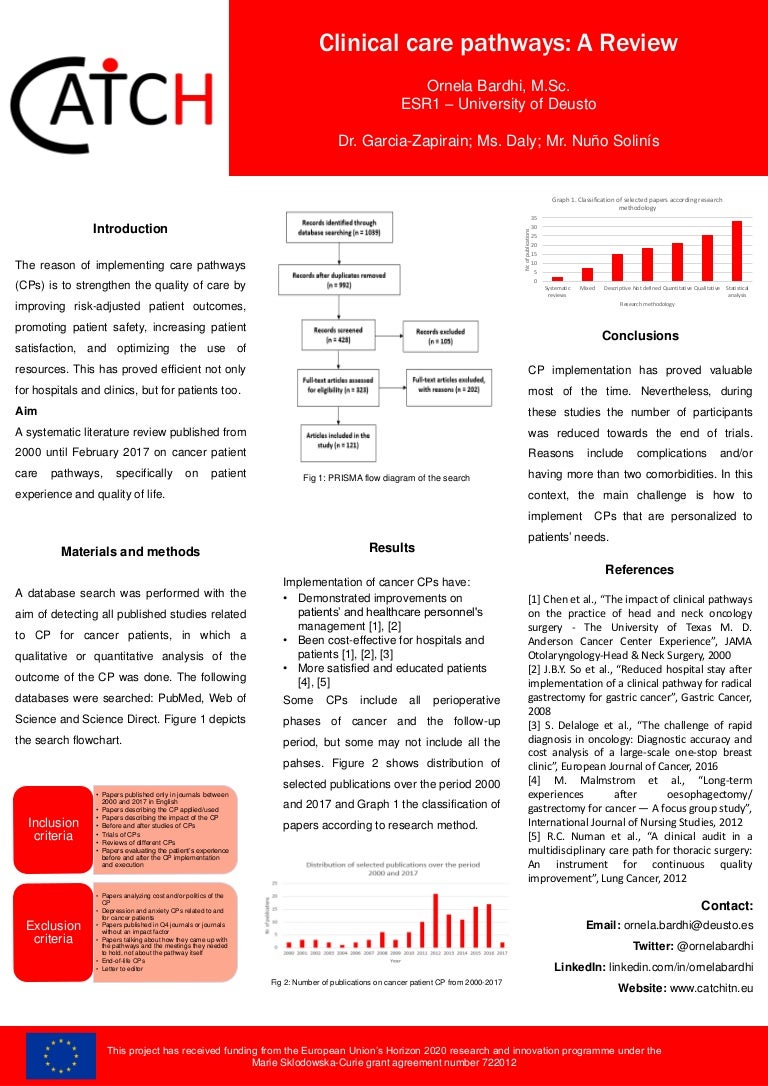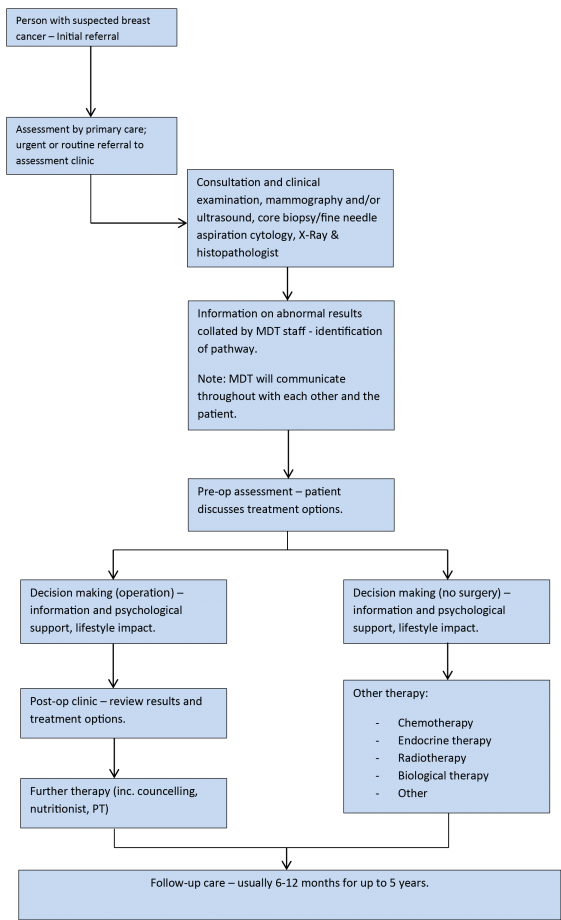Table of Content
The DGKPM is a co-host of the annual workshop “Clinical Pathways in Surgery”, which serves as an exchange platform for clinicians, nurses and administrators interested in working with CPWs. In recent years the society has also cooperated with commercial companies to provide advice and support in the development of software solutions for clinical decision support, which incorporate several elements of CPWs. In the near future the DGKPM will establish a curriculum to train healthcare professionals as clinical process managers. This curriculum comprises a dedicated part on implementation and everyday usage of CPWs.
Examples are the United Kingdom, Canada and Australia (EPA, 2018b; Huckson & Davies, 2007; Grimshaw et al., 2007). CPWs may serve as useful and evidence-based management tools to reduce variations in clinical practice and to decrease costs and length of stay. The reported effects on in-hospital complications are promising and the pathway concept seems to be effective for large groups of patients, especially those receiving invasive procedures. Thus CPW implementation is likely to become increasingly emphasized in Europe (Evans-Lacko et al., 2010) although much more experience with CPW implementation is needed to fully understand this quality improvement concept.
Journal Logo
The DGKPM does not want to compete with the single medical professional societies but, rather, wants to cooperate with them and offer mutual support. This chapter follows the common structure of all chapters in Part 2 of this book. The next section addresses questions of implementation, and the final section provides conclusions for policy-makers, bringing together the available evidence and highlighting lessons for implementation of the strategy.

I could keep going for the full visits, but i think the point is clear. Anyway, the idea is to have a schedule for teaching so that everything is covered, the goals are clear and measurable, and if a fill-in nurse comes, s/he knows exactly where the patient is. I could keep going for the full visits, but I think the point is clear. A randomized, controlled trial of protocol-directed versus physician-directed weaning from mechanical ventilation. The development and establishment of a care map in children with asthma in Taiwan. Effect of a nursing-implemented sedation protocol on the duration of mechanical ventilation.
Readers Of this Article Also Read
Prevalence and use of clinical pathways in 23 countries – an international survey by the European Pathway Association. A prospective, randomized, controlled trial of an emergency department-based atrial fibrillation treatment strategy with low-molecular-weight heparin . Effectiveness of a clinical pathway for inpatient asthma management.
The examples show that there is an increasing number of activities in this field, but little can be said about the actual usage and content of the CPWs. Join a team that cares for each other and is committed to improving health and inspiring hope. Clinical integration and nursing leadership across an integrated delivery system. This article is open access and distributed under the terms of the Creative Commons Attribution Non-Commercial No Derivatives License 4.0. What’s the best way to implement a successful COVID-19 vaccination program? Build, assign, and monitor clinical training tracks targeted to specific areas with our intuitive platform.
4. The effectiveness and cost-effectiveness of clinical pathways
Kampan P. Effects of counseling and implementation of clinical pathway on diabetic patients hospitalized with hypoglycemia. CPWs have the potential to stimulate social movements such as the demand for shared decision-making, the continuing development of the “information society”, advances in treatment, and the changing expectations of patients and the workforce in the UK. There have been several success stories of CPW implementation in England thus far, for example the stroke care pathway originally highlighted by Lord Darzi’s report .

We would often keep them the whole cert period, front load visits and then fall into a skip pattern. Then on the "off weeks" there were disease management nurses in the office that made calls during those weeks with a check sheet of questions to ask the patient. It worked very well for most patients, problems arose with me when the patient didn't quite fit into the "box" and I would increase visits based on my assessment.
UPS HEALTHCARE PARTNERS WITH THREAD TO DELIVER
The effects of clinical pathways on professional practice, patient outcomes, length of stay, and hospital costs. As with any other intervention in healthcare, the question is whether CPWs achieve what they aim for, whether they ultimately contribute to improve the outcomes of healthcare, and at what cost this is achieved. Rotter et al. addressed the effects of CPWs on professional practice, patient outcomes, length of stay and hospital costs for the hospital setting in a Cochrane systematic review (Rotter et al., 2012).
The main aim of clinical pathway implementation is to align clinical practice with guideline recommendations in order to provide high-quality care within an institution. CPWs may serve as useful tools to reduce variations in clinical practice, thereby maximizing patient outcomes and clinical efficiency. CPWs also contribute to the reduction of complications and treatment errors (Rotter et al., 2010).
Although this is an important issue and should guide future efforts, it is not unique to the UK (Greenhalgh et al., 2004; Evans-Lacko et al., 2010). The Belgian Dutch Clinical Pathway Network was launched in March 2000 by a multidisciplinary team under the leadership of the Centre for Health Services and Nursing Research, School of Public Health, at the Catholic University of Leuven, Belgium . The network aims to support Belgian and Dutch hospital organizations in the development, implementation and evaluation of CPWs.
In 2013 the EPA network published a follow-up cross-sectional survey. The investigators collected 163 responses from 39 countries with a 25% response rate (Knai et al., 2013). In this update the authors clearly stated that it was not a representative survey and no prevalence estimates were reported (Knai et al., 2013). Neither survey addressed the issue of which pathway conditions were reported and included in the responses. It is used to translate guidelines or evidence into local structures. Fourth, several epigenetic regulators are effective targets in cancer therapy.
In 2011 one of the largest Dutch insurance companies and various healthcare providers jointly created the Lean Network in Healthcare knowledge network. The goal of this network is to make process improvement an integral and daily part of healthcare by creating and sharing knowledge . The approach of the network is complementary to CPW and directly refers to the Lean methodology. In this issue of the Journal, Kong and colleagues (pp. 1480–1494) add to the classification of SCLC molecular subtypes using histone modification-based epigenomic analysis. To explore the biological importance of the subtypes, the author used in vitro and in vivo models. These models suggest that a loss of NKX2–1 results in a stochastic predisposition to develop nonclassical SCLC-A morphology and thus a different lineage class of malignancies .


No comments:
Post a Comment